Background
On Sunday, December 28, 2014, Air Asia flight QZ8501 crashed into the Java Sea with 162 people on board. Search and recovery efforts are currently underway to locate all parts of the aircraft and recover the cockpit voice recorder and digital flight data recorder. On or around December 31, Java Offshore was in coordination with Balai Pengkajian dan Penerapan Teknologi (BPPT) to assist the AirAsia QZ8501 Search and Rescue operation. Java Offshore’s survey vessel, Java Imperia, has been on standby, awaiting cue from Badan SAR Nasional (BASARNAS) to support the search.
Just after midnight on January 1, Teledyne Gavia received a call for support from Java Offshore to send equipment immediately to the region to support the efforts.
On Friday, January 2, Páll Arnar Þorsteinsson, a Field Service Technician from Teledyne Gavia, began his journey to Jakarta to assist the search efforts by providing vehicle operational support for the Teledyne Gavia AUV, owned by Java Offshore. Teledyne Gavia has provided an advanced control module with survey grade side scan sonar, an advanced navigation module, and other hardware to support the effort. The Gavia AUV modules were transported on the same flights as checked luggage. The AUV, once tasked, will survey the debris field to identify wreckage from the flight. The following and subsequent posts will detail Páll‘s journey and the search efforts. A special note of thanks to Icelandair‘s corporate travel team, Menzies Aviation, and Singapore Airlines for their assistance in getting Páll and his equipment quickly and efficiently from Reykjavik to Jakarta.
"We are all committed to bringing a quick closure for the families whom have been impacted by this unfortunate event. Our vessel, MV Java Imperia, AUV and personnel have been mobilized to the location in coordination with BPPT and we will do what we can within our means to support the mission,” said Rizal Shah, CEO Java Offshore.
Below, Páll discusses the project.
January 4
I flew from Keflavik->London->Singapore->Jakarta, traveling for 25 hours total. Upon my arrival in Jakarta, Java Offshore had arranged for agents to help me through customs with my 100kg of equipment and it did get me through very quickly. I arrived at the Gran Mahakam Hotel at midnight, local time.
I met up with Alfian Mazurki (Survey Engineer for Java Offshore) in the morning and we went to the Java Offshore office around 9 a.m. (located across the street from the hotel). We spent the morning testing the AUV and confirming operation. In the afternoon, the team of eight persons had a meeting with officials of the Indonesian Search and Recovery (SAR) operation run by the government. The meeting was conducted in Indonesian and didn’t reveal a great deal of additional information but largely the current mobilization plan is this:
Foreign personnel travel tomorrow morning (January 5) at 6 a.m. to Pangkalan Bun by flight. Indonesian personnel will arrive later via another flight. We will join a vessel owned by the government and get the equipment ready for deployment. In three to four days, change vessels and join Java Imperia (owned by Java Offshore). Based on my talk with Bachir Ouzani (Offshore Geohazards Specialist) this morning, the most likely scenario will be that the Gavia will be used for confirmation of targets in the area. This is mostly because there are around 30 ships in the area and it will be very hard for us to operate.
Rizal Shah (CEO, Java Offshore) and Bachir are interested in searching to the North of the prioritized area. So I would not be surprised if we would change our focus when we join the Java Imperia. The currents run to the south-east between Borneo and Java islands, so as long as there has been no confirmation on the actual debris at the seafloor, it doesn’t sound unreasonable that the other parts of the debris field might be further up North.
Weather can and will be a factor in our operation as well. The current sea state and weather do not allow for us to operate at the moment.
Note from Rizal Shah: Operationally the equipment will be sent January 5 via the Air Force C-130 Hercules plane at 6 a.m.. Once the team is there they will organize themselves with BPPT and plan for the mission accordingly. It is likely the launch will be done from BPPT's vessel, RV Baruna Jaya 1.
January 5
Today has been long and eventful. The day started at 6 a.m. (3 a.m. in the morning for me… I blame jet lag) and we headed for the airport to catch a plane to Pangkalan Bun at 9:15 a.m. During check-in, we were informed the airplane had been delayed by four hours. We arrived around 3 p.m. Earlier in the morning, Hanna Fadhila and Alfian, with all of our equipment, had been given a ride with a Hercules military airplane that then ended up flying for four hours doing a scan of the ocean before landing in Pangkalan Bun.
We were greeted by Elias, a coordinator on shore that is working as a focal point between different companies and government divisions. He informed us that the plan was to go on board a small vessel with all of our equipment and baggage, sail for 10 hours and then jump between ships in the middle of the ocean… hoping the waves are less than one meter. Bachir rejected this idea and suggested that perhaps we could get another vessel that is available and have that dedicated for AUV operation. Elias made a few calls and it was agreed that it would make more sense to do that than tie up vessels with multibeam and sidescan equipment when using the AUV.
We spent three hours looking at different vessels before we were able to secure a ship owned by the coast guard.
I’m now back at the hotel and tomorrow will start at 7 a.m. The plan is to mobilize, then sail the ship out and do ballasting and a shakedown mission. I do not have the co-ordinates of our destination, but it is believed we are moving northwest of the area that has been searched the last few days. Sailing there will take around nine to 10 hours.

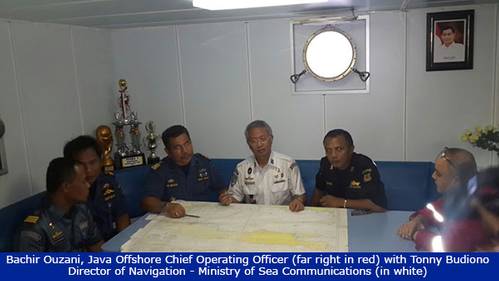
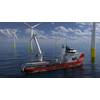

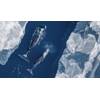

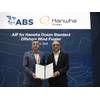
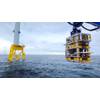





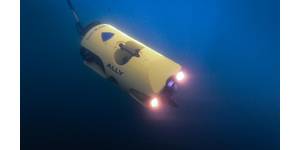
 February 2025
February 2025



